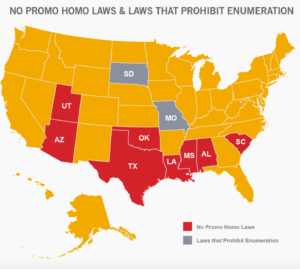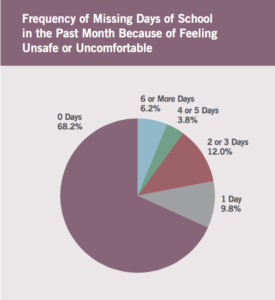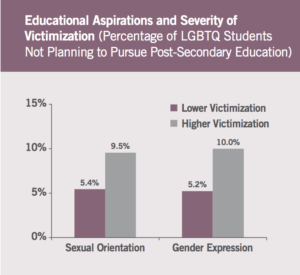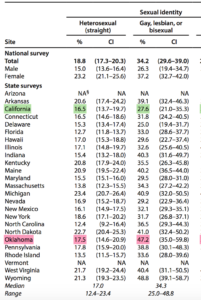Executive Summary
Under No Child Left Behind (NCLB) and Race To The Top (RTTT), raising student achievement (as measured by standardized assessments) and attainment (as gauged by outcomes such as graduation and postsecondary success) have become national priority. Researchers and policymakers have realized many barriers to the success of different student subgroups, in particular students from low-income backgrounds. A combination of factors—insufficient academic preparation, undeveloped social networks, lacking information, low expectations, and school culture, among others—contribute to persisting gaps between lower-income students and their higher-income peers.
What can schools do to counteract these problems? To answer this question, I develop a brief case study of schools that already are successful in doing so. The underlying purpose of this review is simple in nature:
- Identify schools where low-income students do very well at the secondary level, and subsequently enroll and persist in college at high rates;
- Identify what elements of these schools might contribute to this success, and
- Make recommendations commensurate with the scope and limitations of this report about (a) where these schools might have room to improve and (b) how practices from these schools can inform policy elsewhere.
Introduction
The goal of NCLB was clear: erase the “soft bigotry of low expectations” and ensure that all children could succeed.1 Its goals were arguably unrealistic and its impacts on schools far from its intentions, but its core message was strong: work for the success of all students, and don’t settle for low expectations or excuses for underachievement. Under RTTT, this idea emerged in the form of universal access to higher education and college/career readiness.2
The push for widespread college attendance predated both the W. Bush and Obama administrations, and over the past few decades, there has been significant progress toward the goal of postsecondary equity in some regards. Of 1980 high school sophomores from the lowest family income quartiles, 52% reported not enrolling in college within 8-10 years of the expected time of completing high school, which fell to 28% for 2002 sophomores.3 The National Center for Education Statistics (NCES) reports that the percentage of bottom-income-quintile students who enrolled in college recently after graduating high school reached a historic high of 69% in 2015. According to its dataset, this statistic has been incredibly volatile in recent years; in 2007, it reached 58%, but fell to 45% in 2013, only to rebound to the 2015 high.4
However, not all indicators are so positive. The College Board reports declining representation of undergraduate Pell-Grant recipients in college since the 2011-12 term (Pell grants are intended to assist low-income students pay for college).5 Based on work by Ikoma & Broer (2015), who analyzed data on students from the High School Longitudinal Survey (HLS), more than 95% of high school freshmen from the lowest socioeconomic quartile (SEQ) in 2009 looked to eventually earn a bachelor’s degree. By 2013, a very different picture emerged: only 43% of high-achieving students and fewer than 30% of low-achieving students from the bottom quartile were enrolled in a baccalaureate program. Interestingly, more low-achieving students from the top SEQ (58%) entered into such programs by 2013 than did high-achieving students from the bottom quartile.6 Of course, not all students enroll in college immediately upon the close of high school, and it is possible that these gaps close in the years following the end of their secondary education. For example, according to NCES, 63% of students from the lowest income quintile (compared with 83% from the highest income quintile) enrolled in college within a year of graduating from high school or completing a GED—still a large gap, but not to the extent seen in Ikoma & Broer’s analysis.4
In any case, the fact that stark inequities in postsecondary accessibility persist between different socioeconomic groups has drawn the attention and action of researchers, educators, and policymakers attempting to find solutions. It has also become clear that examining accessibility for individual subgroups in isolation from their school context is not enough. Students from lower-income backgrounds, as well as students who attend schools/districts with higher concentrations of poverty, are less likely to persist from the first to second year of college.7, 8 Getting students to enroll in college is necessary but not sufficient for postsecondary success.
Literature Review
We want to identify what can be changed in order to improve the postsecondary success of disadvantaged students. There are a number of relevant factors in across domains:

Figure 1: different inputs/cause variables and outcomes/effect variables in the educational process. Not displayed here is how the different inputs mutually affect one another.
Many of the causes of different academic outcomes might initially seem outside of the control of high schools. Parents, home environment, student finances, student beliefs and behaviors, and peer interactions have deep impacts on student aspirations and values. However, many of these variables are not so far removed from the traditional school as we may think. Student beliefs and values are influenced by peers and cultural norms, but also by school; parents can be engaged in the school community when educators make efforts to accommodate and interact with them. Even families who typically do not have much time or opportunity to engage in education can find ways to be involved in their children’s academics with the help of school resources and initiatives.9 Then it becomes paramount for policymakers, educators, and school leaders to know how their institutions can best design their practices and services at the secondary level to maximize postsecondary student success, especially for underrepresented groups.
Academic preparation. Some relatively simple features of educational attainment in high school, such as grades and mathematics course taking, serve as some of the strongest predictors of college success. It has been shown that strong academic preparation in high school can narrow gaps in college persistence between first-generation students and their peers. Unfortunately, students from low-income backgrounds tend to be less ready for college, in part because their schools often lack the resources and course offerings to properly prepare them.10
Social interactions/environments. While academics are at the front of college readiness, beneath students’ academic preparation is a web of social interactions and experiences that may be just as important. Unfortunately, low-income students are less likely than more affluent peers to be immersed in secondary school environments that encourage open interaction between them and their peers and teachers, both inside and outside of class. As a result, they are less prepared to capitalize on support services and to ask for help when they need it.11, 12 Anthony Abraham Jack describes this in the context of the “doubly disadvantaged” and the “privileged poor:” the latter group, consisting of low-income students who happen to attend elite high schools, benefits from smoother (if not instantaneous) integration into the postsecondary environment due to the kinds of interactions they had with students and professors before college, while the former group misses these advantages.12
Expectations of adults and students. Across the country, attending college is increasingly seen as a social expectation and requirement.13Unfortunately, not all students receive this expectation equally. Whether by race/ethnicity or economic status, traditionally underrepresented students tend to be the subject of lower expectations on the part of teachers,14 and teachers are more likely to enforce compliance and obedience among low-income students than among students from better economic backgrounds, where they stress an array of beneficial interactive and academic skills.15 Some studies even suggest that for disadvantaged students, parental aspirations for children’s postsecondary success are lower (though this finding is somewhat ambivalent).10 Additionally, guidance counselors in schools with higher low-income concentrations tend to be more focused on steering students toward the workforce, while counselors in private schools place more emphasis on students developing themselves on the whole.16 Behaviors such as these on the parts of adults, even done unconsciously, can convince low-income students that striving for higher levels of educational attainment is simply not for them. According to Gagnon & Mattingly (2015), even when students from low-income backgrounds have near-identical access to AP courses compared with higher-income peers, they are about three times less likely to enroll in these courses.17 In a study of several high schools attempting to detrack, Yonezawa et al. (2002) found that several factors prevented underrepresented students from moving into higher-track courses, among them the students’ own unwillingness and intimidation by the atmosphere surrounding higher-track classes.18 The same pattern emerges for college application. Higher-achieving low-income students are less likely than their higher-income peers to enroll in four-year colleges, despite their equivalent academic qualification.10 According to a 2013 study, only 8% of high-achieving students from economically challenged backgrounds applied to postsecondary institutions reflective of their capabilities.19
Information about college and support for postsecondary aspirations. Having a willingness to apply and enroll in college is possible and beneficial only if students are adequately informed about the application process, and about the demands that will be made of them upon matriculation. At the most basic level, students from lower-income backgrounds tend to have less access to guidance counselors, leaving them more prone to lack information about what is needed to arrive at and succeed in college.10, 20 Many low-income families are also intimidated by the published tuitions of colleges, not realizing that they could potentially receive substantial financial aid.19 However, there are a number of programs designed to make students and their families more aware of the options available to them. One such initiative, the Expanding College Opportunities project, was able to dramatically improve the extent to which low-income students applied to institutions that matched their abilities at a cost of only $6 per student.19 Early results from another program, the College Ambition Project—operating on a whole-school level to bridge the gaps between college ambitions and entrance by focusing on different aspects of the college matriculation process—suggest that comprehensive but affordable schoolwide intervention can be conducted to improve enrollment trends for disadvantaged students.20, 21 High schools can also significantly increase the chances that students gain access to and attend four-year colleges by establishing systems of support and encouraging students to apply for financial aid.22
School culture/climate. A 2013 report drawing on statewide California data for male students showed that discipline has a strong connection with postsecondary aspirations, which disproportionately affects low-income students. Low-income students who had been suspended or expelled were half as likely to attend a four-year college as similar-income peers who were not disciplined, and less than half as likely as higher-income peers who received such discipline (middle/high-income students who faced harsh disciplinary action were also much less likely to attend a four-year school than similar-income peers who did not face this).23
Methodology
School-level data were obtained through EdSight, a portal constructed by the State of Connecticut to access different kinds of information on students and teachers. Although Connecticut offers a wealth of data through EdSight, this collection is still in development, and data are not always available for all subgroups in all schools. In particular, data for free/reduced lunch-eligible (FRL) students are often suppressed to protect student anonymity.
The class of 2014 is the most recent cohort for which enrollment and persistence data were available. In order to be considered, a school had to have non-zero FRL composition, as well as data available for FRL high-school composition, graduation rates, and postsecondary enrollment/persistence. By the time non-qualifying schools were excluded from the dataset, there were 52 schools remaining; of these, 37 (71%) had FRL graduation rates of 75% or higher:

Figure 2: the postsecondary enrollment rate vs. the first-second year persistence of FRL students from 37 high-graduation high schools across Connecticut.
The two schools selected were:
- S1: Trumbull High School (Trumbull), a public school in Fairfield County, CT, where the median income is over $108,000. According to EdSight, it is composed of only 8% FRL students, far below the statewide composition of 37%. 96% of instructors at Trumbull possess a master’s degree.
- S2: Metropolitan Learning Center for Global and International Studies (MLC), a magnet school in Bloomfield, CT. It is a member of the Capitol Education Region Council (CREC), an organization which (among other things) hosts a group of seven specialized service schools and nineteen magnet schools in the Greater Hartford area. MLC is composed of 35% FRL students.
Data and Evidence**
In this section, I probe for information about different aspects of each school that are relevant to the academic and social factors described above. There are three basic kinds of information I seek:
- What are the academics like at each school, and what are the levels of student attainment?
- What kind of climate does each school have, and what kind of support does it offer students?
- How do people perceive the schools?
Academics & Achievement
For classes graduating by or before 2019, the State has established a minimum of 20 credits for graduation, distributed across the fields of English, social studies, science, mathematics, arts or vocational education, and physical education.24 In their documentation, both schools describe offering a variety of courses in fields beyond these, including technology education, business, agriculture, world languages, to name some. Both schools offer students college courses hosted through local colleges (such as University of Connecticut and Housatonic Community College).25 Trumbull hosts centers for aquaculture and agriscience (a combination of agriculture and plant/animal sciences), both of which are well-regarded; Trumbull reports receiving the designation of the best school statewide for plant science (recently, year not given) and animal science (2014). On its website, MLC highlights that it is the only public school in the state authorized to offer IB courses in both the middle and diploma years (grades 6-10 and 11-12, respectively). Both schools offer the chance for students to learn outside of the classroom, through opportunities such as internships and service learning. In Trumbull, service learning may be done for extra academic credit, and community service is required for graduation; in MLC, service learning is required for students in every year (10 hours for grades 6-7, 15 hours for 8-9, 20 hours for 10-12). Additionally, MLC offers students the opportunity to enjoy international learning experiences, such as long-term exchange learning and shorter-term foreign travel. Because of the variety of opportunities it offers students, MLC has received distinctions and recognitions on a number of occasions. Its website reports that in 2009, the U.S. Department of Education deemed it one of the most successful magnet schools in the country.
In short, both schools have been recognized for their opportunities they offer students inside and outside of class. How are students achieving, given such education? I examined this question on the basis of several measures. As the college-enrollment decisions students make are affected both by themselves and their peers, I examined selected indicators for both FRL students exclusively and all students:
Table 1: High School Academic Achievement
| Measure of achievement1 | Trumbull (All) | Trumbull FRL7 | MLC (all) | MLC FRL | Statewide All | Statewide FRL | |
| CSD SAT2 | ELA | 84% | * | 51% | * | 65% | 39% |
| Math | 60% | * | 17% | * | 39% | 15% | |
| CMT/CAPT Science3 | 77% | 60% | 30% | * | 56% | 30% | |
| Met college readiness benchmark (CRB)4 | 54% | 33% | 37% | 25% | – | – | |
| AP/IB students5 | 17% | * | 42% | 36% | – | – | |
| College/Career Readiness (CCR) course taking6 | 91% | 85% | 100% | 100% | – | – | |
1 CSD SAT and CMT/CAPT data are only available for the 2015-16 term. I assume that student performance does not fluctuate from year to year to an extent that would render this comparison invalid with data from the 2013-14 term. All other data for 2013-14 term unless indicated.
2 % of students reaching either of the two higher achievement categories on the SAT test (3 and 4 on a 1-4 scale).
3 % of students at or above the two highest performance categories on the science examination (equivalent to 4 or 5 on a 1-5 scale)
4 Based on results of SAT, ACT, AP, and IB exams. For 11th/12th-grade students only.
5 % of seniors who have enrolled in at least two AP/IB courses in high school
6 Analogous to 5. College and Career Readiness courses incorporates AP and IB, as well as Career/Technical Education, workplace experience, and dual enrollment. These data are provided for the 2014-15 term, prior to which such information was not available.
7 In all cases where they appear, * indicates that the data were suppressed, and – indicates that the data were not available.
While Trumbull FRL students perform lower than the general population of their school in science, they outperform the statewide average for all students. Data were suppressed for these students’ performance on the Connecticut Day School SAT, but given the other data in the table, it is a reasonable assumption that Trumbull FRL students performed higher than statewide counterparts but lower than the general population of their school. At MLC, assessment data for FRL students are suppressed, but the whole population performs noticeably lower than their Trumbull counterparts, despite the fact that they are more likely to engage in CCR work. The science proficiency rate of all MLC students is half that of Trumbull’s FRL students.
While test scores and course taking provide some notion of achievement, they do not represent the eventual outcomes that matter most to educators and policymakers. Though there are many outcomes that are important, the data most easily accessible is the information on high school completion and postsecondary status:
Table 2: Secondary and Postsecondary Attainment
| Trumbull (all) | Trumbull FRL | MLC (all) | MLC FRL | Statewide (all) | |
| Graduation rate | 97% | 91% (+4) | 96% | 97% (+10) | 87% |
| Entrance rate | 87% | 79% (+6) | 85% | 85% (+12) | 73% |
| Persistence rate | 93% | 93% (+5) | 87% | 87% (-1) | 88% |
| GEP rate1 | 78% | 69% (+13) | 71% | 72% (+16) | 56% |
1 Product of the rates of graduation, college entrance, and persistence. Parenthetical numbers give the difference between school FRL attainment and corresponding statewide attainment.
All in all, FRL students at both schools have relatively high educational attainment. With the exception of MLC’s persistence rate, FRL students enjoy greater success than the general population across every measure of secondary/postsecondary attainment. The differences in the individual statistics between the two schools mostly cancel out, leaving very similar GEP rates for both school (though MLC has a clear advantage of 3 % points). Of note, while Trumbull’s FRL students tend to attain at lower levels than the general student body across the different measures (the exception being persistence), the opposite is true for FRL students at MLC, who consistently match or outperform the general student body.
School atmosphere and support structures
Through its crisis intervention specialist, Trumbull maintains three scientifically-based programs (two of which are administered to all students, with the third an elective) to help students recognize and combat depression, develop self-esteem and goals, make decisions, learn self-management, and improve attendance. Students and parents are encouraged to keep connected with teachers and class expectations, and many teachers provide websites for their students’ organization. On its website, Trumbull presents many resources to prepare students and parents for college, including different guides, information about mental health, and college fairs as early as sophomore year. As part of its extracurricular offerings, Trumbull hosts organizations designed to help students support themselves and their peers, in particular the peer mediators and the peer leaders. Both programs admit students on the basis of teacher recommendation and an application/interview process. Peer leaders, whose organization was originally started to warn about the dangers of drug and alcohol use, work in collaboration with the Anti-Defamation League of B’nai Brith (ADL) in order to combat bias and bullying, for which they also receive training (14 hours).The purpose of the peer mediation program is to help students resolve conflicts between peers, a task for which admitted students receive extensive training (30 hours).26 Trumbull is explicit that peer mediation is intended to serve as “an alternative to traditional discipline.” In the 2010-11 year, peer mediators handled 66 incidents; one student mediator commented that the program has thoroughly improved the school’s atmosphere.26
At MLC, counselors make themselves available to students both during and beyond the students’ time at the school. I could not find specific support programs or support-related guides (e.g. for mental health and the like) on MLC’s informational webpage. It does, however, provide an external link to the Trude Mero Family Resource Center operated by CREC. Its handbook also mentions adoption of Positive Behavioral Interventions and Supports (PBIS), in which “a continuum of positive behavior support for all students within a school is implemented in areas including the classroom and non-classroom settings.”27 The school sets clear expectations for student behavior and orderly conduct, as evidenced by its strict dress code (e.g., all high school students are required to wear buttoned shirts and khakis, both of which may be selected from only three colors). MLC also maintains a system of “dragon points” (so named for the school’s mascot) to enforce behavioral expectations. At the start of each academic quarter, all students automatically have ten points; students must retain some minimum of points to partake in certain events and opportunities. Certain violations and academic consequences have automatic point deductions affixed, ranging from one-point deductions (e.g. dress code violation) to ten-point deductions (which is only possible by out-of-school suspension).
Both schools speak of productive and welcoming environments, and MLC mentions on a number of occasions its commitment to upholding and demonstrating that all children are capable learners; but how does their promotion match with the objective data? To assess school climate, I gathered information on attendance and discipline:
Table 3: School climate and culture
| Trumbull (All) | Trumbull FRL | MLC (all) | MLC FRL | Statewide (all) | |
| Absenteeism rate1 | 1.5% | * | 8.2% | 15% | 10.8% |
| Suspension rate2 | 3.1% | 9.1% | 12.5% | 20% | 7.4% |
| Mean suspension count3 | 1.6 | – | 1.9 | – | 2.5 |
| Confrontational/General-hazard Incidents4 | <295 | – | 67 | – | N/A |
1 Chronically absent students are those who miss at least 10% of the school year for whatever reason.
2 Percentage of students suspended
3 Of students who are suspended, the average number of suspensions they receive
4 Includes “fighting and battery,” “physical and verbal confrontation,” and “personally threatening behavior.” Data would be included for “violent crimes” and “weapons,” but this information was suppressed for MLC, and so was excluded for both schools for the sake of comparability.
5 This number is the count for the entire Trumbull district, including 11 schools in total. School-level data is suppressed for Trumbull in each of the three included categories, but it must of course not surpass the districtwide total.
Several trends emerge. First, both schools have work to do to lower the suspension rate of FRL students, who in both cases receive more disciplinary action than the average student. Second, in both schools the average suspension count per student is well above 1, although in both schools the average suspension count is lower than the statewide value. Third, MLC witnesses a significantly higher incidence of confrontational events than Trumbull, perhaps explaining why suspensions are more prevalent at MLC. No matter the cause of these incidents, MLC certainly has room to improve its school climate.
Perceptions
While having official accounts of student performance and school climate is valuable, this does not describe the subjective perceptions of those involved, information which is of equal importance. The most informative way to gather the perspectives of students, parents, and others involved with the schools would be interviewing and observing the schools in question on different occasions; this option, however, is not available under given circumstances. For now, I draw on responses to polls distributed by Niche®, an organization that has conducted extensive work in producing rankings, report cards, and school profiles for communities across the United States. The school asks reviewers to label their schools by a five-tiered scale, ranging from “terrible” to “excellent.” The results from all responses for each school are given here:

Figure 3. The numbers shown in the center of the charts are the numbers of total responses for each school.
In its reviews, the website offers reviewers the option to categorize their responses by certain tags; the responses for some of these categories are given here:


Figure 4. Numbers in centers represent quantity of responses posted in each category. Note that there are more categories on Niche’s website than the ones provided here.
All in all, both schools have received far more positive than negative reviews. Trumbull tends to receive positive ratings all around, and in the four subcategories examined, only one category (student life) contained any decidedly negative responses. MLC received no negative ratings in two categories, both of which pertain to the academic content of the school. Average reviews are also rather common. Here are some of the comment themes, positive and negative, left by reviewers:
Table 4: Niche Reviews of Schools
| Trumbull | MLC | |
| Positive |
|
|
| Negative |
|
|
As expected, neither school is perfect: in both, commenters report variations in teacher and class quality. The implications of these features will be discussed in the following section.
Note that these survey results, due to the limited numbers of responses and the method of collection, should be interpreted with caution. This is by no means scientific, and these responses may not be representative of the views of all parents and students involved with these schools. There is no way to predict how these results might be biased because of insufficient sampling and due to other factors that affect who had access to Niche’s surveys. These surveys do, however, give some insight into the workings of each school and the experiences that some people have had therein.
Discussion
Given the information I have presented, the questions I seek to answer are:
- What elements of each school enable FRL students to succeed at high rates compared to the state?
- What might account for differences between the schools, and where does each have room to improve?
In both schools, there is evidence of high academic attainment during and after high school. Even though many students fall short of proficiency on statewide measures and CRBs, these might not be the best indicators of college preparation. That in either school no more than a third of 11th and 12th grade low-income students surpass a CRB, yet no less than 85% of students persist from the first to second year of college, suggests that meeting a CRB is far from the only important factor in postsecondary success. More important seems to be the exposure students have to high-level coursework and real-world experiences in the forms of internships and workplace participation, which is very high for both schools.
Trumbull appears to have an extensive array of supports and encouragements built in for students. Its website provides many informative resources from which parents and students may benefit, and it creates a culture of success by promoting college attendance as early as sophomore year. High percentages of Trumbull students go on to four-year colleges (in 2013-14, about three quarters of recent graduates), which likely creates an expectation of college for the majority of students in the school. Trumbull has made very clear efforts to maintain a supportive and productive school climate through its curriculum-integrated self-development education and peer-led support programs, the effects of which are evidenced by low schoolwide rates of absenteeism and suspension. MLC creates a strong culture of achievement codified in high expectations and a clear system of consequences for different behaviors. It establishes a commitment to getting children to succeed during and after high school, even if that means providing counseling for students after they graduate.
In both schools, students also have the opportunity to capitalize on resources beyond what they gain purely from academics. Trumbull’s extensive array of extracurricular organizations not only provide students the chance to pursue varied interests, but also access to valuable social interaction and, as observed by one Niche reviewer, skills that become very useful in future extracurricular activities, internships, and jobs. Although it is a public school, Trumbull epitomizes Anthony Abraham Jack’s description of the “privileged poor:” it is a high school in which low-income students are immersed in a social environment that allows them to succeed at very high rates (on par with the general student body) when they enroll in college. MLC has the advantage of a highly integrated student body where students from all backgrounds can engage in enriching experiences (such as foreign travel and interaction with international peers) that most students in standard schools do not have. Its requirements of service learning as early as sixth grade and independent research by the time of graduation likely foster a sense of academic independence that encourages students to pursue postsecondary success.
Although both schools are highly successful in comparisons other Connecticut high schools, there is still room for improvement when compared to each other and themselves. Although Trumbull’s FRL students demonstrate that they are just as capable of succeeding as anybody in college, they are noticeably less likely to enroll in college. Before that, they are also less likely to graduate from high school than other Trumbull students. Why might this be? Although Trumbull provides many resources online and in school for students to utilize for support and information, it is possible that not all students have equal access to these resources. FRL students engage in college-level work at high rates, but not on par with other students. Although their immersion in an affluent school may provide them with valuable social capital (contributing to high persistence rates), it is conceivable that their low representation in the school’s population serves as an isolating factor which discourages some (though clearly not most) students from applying to college. Additionally, Trumbull students have lower rates of exposure to CCR coursework than students at MLC, and there is a gap between the higher-level coursework loads of Trumbull’s general student body and FRL students. Giving more students the opportunity to engage in college-level work could encourage postsecondary enrollment, perhaps explaining why MLC’s FRL students enroll at a rate that rivals that of Trumbull’s full student body.
MLC is different from Trumbull in two ways: gaps between FRL students and the general student body have closed, and students are more likely to graduate and enroll in college, but less likely to persist. One might point to the high rates of suspension and strict behavioral policies established by MLC; although such an environment works for most students (as 87% persist from first to second year), it is possible that those students who do not persist attend colleges which do not provide as much structure. Although MLC strives to produce students who are academically independent, it is possible that students are not learning to be sufficiently independent and self-promoting in other domains. In any case, it is somewhat startling to see that one out of every five FRL students is suspended at MLC, a practice which might not be discouraged by its host organization. According to EdSight, while suspension rates have monotonically declined statewide since the 2011-12 term, they have (overall) increased at CREC schools. Being that students who are suspended automatically lose either five or ten dragon points—thereby excluding them from some of the special opportunities and incentive activities the school offers—that the average suspension count per suspended student is approximately 2, and that low-income students are disproportionately affected by suspension, it is quite conceivable that MLC’s disciplinary policy is disproportionately keeping low-income students from the activities meant to enrich their education.
Conclusion & Recommendations
Before discussing conclusions and policy recommendations, I discuss the limitations of this review. Although Trumbull posts the percentages of students who go on to 4-year and 2-year colleges in its programs, it does not say what the distribution of attendance is among student subgroups. I was unable to find information regarding where MLC students go to college. Also missing from the data is the last stage of postsecondary attainment, which is graduation and degree attainment. It would be very useful to examine how student performance varied by the type of institution attended for different subgroups, and what differences emerged (if any) between Trumbull and MLC. Moreover, this report focuses only on certain features of each school that might account for the observed levels of postsecondary success; there are important variables which affect secondary and postsecondary success that were beyond the scope of this paper. Additionally, this report was not derived from extensive observation of each school and conversations with the various constituents, but from data which was externally and electronically accessible at the time of writing. It identifies correlations, which are not guaranteed to have causal meaning. Were this study to be extended, it would be most improved by such engagement with the local communities involved and investigation of further outcomes.
Given these limitations, this report makes some novel contributions. There is a wide literature on what kinds of high school properties contribute to or detract from student success at the secondary and postsecondary levels; this study begins the assessment of how these features compare between two public schools with highly successful low-income students, identification of how each school’s goals are realized and hampered by their policies, and how the constituents involved in each school perceive the school’s actions. Based on the available evidence, I find these elements to be the most likely contributors to the success of low-income students, and I recommend that policymakers and educators seeking to increase the postsecondary success of economically disadvantaged students implement these in other places:
Expose all students to high-level work and real-world experiences. The more students engage in college-level work and work experiences in high school, the more prepared they will be going forward. This enhanced preparation will in turn convince more students that they are ready for the challenges of higher academia.
Improve school climate. Research has tied college enrollment to secondary discipline, and in this case study, it appears that school climate and student behavior (as gauged by attendance and suspension) matters more in the long run for persistence in college.
Increase low-income participation in extracurricular activities, whether in the form of organizations or supplemental learning. As seen in these two schools, offering students enrichment beyond the time spent in class, whether in the form of external organizations, community service, or supplemental learning, plays an important role in personal development which is not always fulfilled by work assigned in class.
Encourage collaboration between colleges and high schools to determine appropriate levels of structure, independence, and support. Schools must find a proper balance between maintaining structure and cultivating independence, academic and social, in order to maximize the chance for student success. Both schools studied in this report attempt to do this in different ways, and arguably both do a relatively good job (though there is always room for improvement), which contributes to the success of their students.
Hold students to high expectations. Trumbull’s FRL students are immersed in a school where the overwhelming majority of graduates go to four-year colleges; MLC students are held to high behavioral expectations in school and attempt to mirror the experiences that students will have beyond high school in order to create a culture of high attainment.
Encourage peer interaction across diverse student groups. One advantage that MLC retains is its high racial and socioeconomic integration, which is compounded by interactions with international professors and students. This appears to be an effective way of reducing (and in this case eliminating) gaps between subgroups and raising collective aspirations.
References
** All tabulated, quantitative data presented in the Data and Evidence section is obtained from EdSight, either from table generators or internal documents, unless otherwise noted. All information regarding the schools’ academic offerings, support programs, and other descriptions may be found through subdirectories of their websites, namely https://www.trumbullps.org/ths/ and http://www.crecschools.org/our-schools/metropolitan-learning-center/. Information about the CREC district may be found via http://www.crecschools.org/ and subpages. Information about these schools/districts obtained from external sources are cited separately. Relevant documents for Trumbull include the handbook (http://www.trumbullps.org/ths/images/docs/2013-14Docs/POS%2013-14.pdf), the school profile (https://drive.google.com/file/d/0B8AytrfwDhFCTDU2VkZqWjBVcE0/view), and the FAQ (http://www.trumbullps.org/ths/images/docs/2015-16Docs/FAQ1516.pdf); for MLC, the handbook (http://crecmagnetschools.com/files/file/News/Documents_MLC/ParentStud.Handbook20112012Final72111.doc.pdf).
1 Welner, K. G., & Weitzman, D. Q. (2005). The soft bigotry of low expenditures. Equity & Excellence in Education, 38(3), 242-248.
2 White House (undated). Higher Education. The White House. Located at https://obamawhitehouse.archives.gov/issues/education/higher-education.
3 Cahalan, M., Perna, L., & Yamashita, M. (2016). Indicators of higher education equity in the United States: 2016 historical trend report. Pell Institute for the Study of Opportunity in Higher Education.
4 U.S. Department of Education, National Center for Education Statistics. (2009). Table 302.30: Percentage of recent high school completers enrolled in 2-year and 4-year colleges, by income level: 1975 through 2015. In U.S. Department of Education, National Center for Education Statistics (Ed.), Digest of Education Statistics (2016 ed.). Retrieved from https://nces.ed.gov/programs/digest/d16/tables/dt16_302.30.asp?current=yes.
5 College Board (2016). Trends in Student Aid. The College Board.
6 Ikoma, S., & Broer, M. (2015). How Can We Help Students Match College Aspirations to College Enrollment?. InformED Blog. Washington: American Institutes for Research, Education Policy Center. Accessible via http://educationpolicy.air.org/blog/how-can-we-help-students-match-college-aspirations-college-enrollment.
7 Youth, H. A. Postsecondary Access, Persistence, and Completion of Houston-Area Youth.
8 Fletcher, J. M. (2010). Peer Influences on College Choices: New Evidence from Texas.
9 Elia, M. S. (2015). Parenting Practices of Lower Socioeconomic Status Parents of High Achieving Students.
10 Kuh, G. D., Kinzie, J., Buckley, J. A., Bridges, B. K., & Hayek, J. C. (2006). What Matters to Student Success: A Review of the Literature.
11 Engle, J., & Tinto, V. (2008). Moving Beyond Access: College Success for Low-Income, First-Generation Students. Pell Institute for the Study of Opportunity in Higher Education.
12 Jack, A. A. (2015). What the Privileged Poor Can Teach Us. New York Times: Sunday Review Accessible via https://www.nytimes.com/2015/09/13/opinion/sunday/what-the-privileged-poor-can-teach-us.html?_r=2.
13 Arum, R., & Roksa, J. (2011). Academically adrift: Limited learning on college campuses. University of Chicago Press.
14 Papageorge, Nicholas W. and Gershenson, Seth and Kang, Kyungmin, Teacher Expectations Matter. IZA Discussion Paper No. 10165. Available at SSRN: https://ssrn.com/abstract=2834215
15 Golann, J. W. (2015). The paradox of success at a no-excuses school. Sociology of Education, 88(2), 103-119.
16 Clinedinst, M. E., Koranteng, A., & Nicola, T. (2015). State of college admission. Washington, DC: National Association for College Admission Counseling. Accessible via https://www.nacacnet.org/news–publications/publications/state-of-college-admission/.
17 Theokas, C., & Saaris, R. (2013). Finding America’s missing AP and IB students. Education Trust.
18 Yonezawa, S., Wells, A. S., & Serna, I. (2002). Choosing tracks:“Freedom of choice” in detracking schools. American Educational Research Journal, 39(1), 37-67.
19 White House (2014). Increasing college opportunity for low-income students: Promising models and a call to action. Report, Executive Office of the President.
20 Schneider, B., Khawand, C., & Judy, J. (2012). The college ambition program: Improving opportunities for high school students transitioning to college. In spring conference of the Society for Research on Educational Effectiveness. Accessible via https://www.sree.org/conferences/2012s/program/downloads/abstracts/548.pdf
21 Schneider, B., Broda, M., Judy, J., & Burkander, K. (2013). Pathways to college and STEM careers: Enhancing the high school experience. New directions for youth development, 2013(140), 9-29. Accessible via https://www.ncbi.nlm.nih.gov/pmc/articles/PMC4135439/
22 Roderick, M., Coca, V., & Nagaoka, J. (2011). Potholes on the road to college: High school effects in shaping urban students’ participation in college application, four-year college enrollment, and college match. Sociology of Education, 84(3), 178-211. Accessible via https://consortium.uchicago.edu/sites/default/files/publications/SOE_Potholes.pdf
23 Terriquez, V., Chlala, R., & Sacha, J. The Impact of Punitive High School Discipline Policies on the Postsecondary Trajectories of Young Men. Pathways to Postsecondary Success. Accessible via https://pathways.gseis.ucla.edu/publications/Discipline_Report.pdf.
24 Connecticut Association of Schools (undated). Connecticut General Statutes 10‐221a ‐ High school graduation requirements. Student support and remedial services. Diplomas for veterans of World War II and the Korean hostilities. Collection of certain student information. Accessible via https://www.casciac.org/pdfs/CT_Graduation_Requirements.pdf
25 Capitol Education Region Council (undated). Magnet School Annual Report 2013-2014 CREC Metropolitan Learning Center for Global and International Studies. Connecticut State Department of Education. Accessible via http://www.sde.ct.gov/sde/lib/sde/pdf/equity/magnet/MLC.pdf.
26 Fuchs, R. (2011). THS Students Combat Bullying with Mediation. Trumbull Patch: Schools. Accessible via https://patch.com/connecticut/trumbull/trumbull-high-schools-mediators.
27 OSEP Technical Assistance Center on Positive Behavioral Interventions and Supports (2017). Positive Behavioral Interventions & Supports. Accessible via https://www.pbis.org/school.

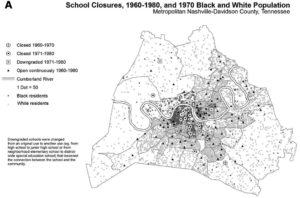
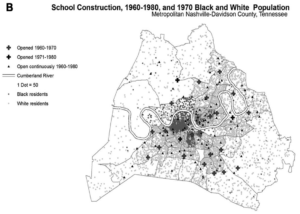
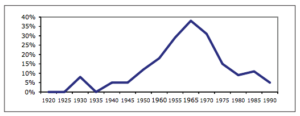 Figure 2. Percentage of West Hartford home advertisements mentioning a specific school, 1920-1990. (Dougherty, 2012, p. 213).
Figure 2. Percentage of West Hartford home advertisements mentioning a specific school, 1920-1990. (Dougherty, 2012, p. 213).